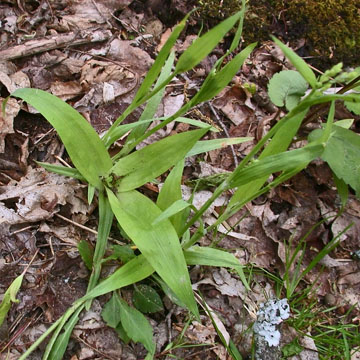

Carex albursina - (image 1 of 6)
Taxonomy
Family: Cyperaceae
Section Laxiflorae
Habitat
Calcareous woods.
Associates
Distribution
VT and southern Quebec to MN, south to SC and AR.
Morphology
Tufted perennial 20-60 cm; fertile stems triangular and slightly winged, roughened on the angles; basal sheaths mostly brown but the suprabasal ones often purple; leaves of sterile shoots 1-5 cm wide; leaves of the fertile ones 4-16 mm; terminal spike staminate, sessile or nearly so, often hidden by the uppermost pistillate spike and its bract; pistillate spikes 3 or 4, 1-3 cm, the uppermost 1 or 2 close to the staminate peduncle, the other remote, on short to elongate peduncles, none basal; pistillate scales broadly obtuse or subtruncate, only minutely apiculate; perigynia 3-20, overlapping, 3-4.2 mm, greenish-stramineous, with many fine nerves and also 2-ribbed, obtusely trigonous, obovoid, with a short, abruptly bent beak; achene convexly trigonous.
Notes
Fruiting May to June
Wetland indicator: NA
The name refers to White Bear Lake in Minnesota.
The leaves of the sterile shoots are among the widest of any Carex spp. The combination of smooth pale green leaves (especially near the base) and relatively broad leafy bracts of the fertile shoots help distinguish this species from a few other wide-leaved Carex. These include C. platyphylla (leaves more waxy blue-green and bracts much narrower), C. plantaginea (leaves darker green and wrinkled and bracts reduced to nearly bladeless sheaths), and C. careyana (leaves darker green and narrower and bracts narrow). The name refers to White Bear Lake in Minnesota.
References
Gleason, Henry A. and A. Cronquist. 1991. Manual of Vascular Plants of
Northeastern United States and Adjacent Canada. Second Ed.
The New York Botanical Garden. Bronx, NY
|
© Michael Hough 2018 |